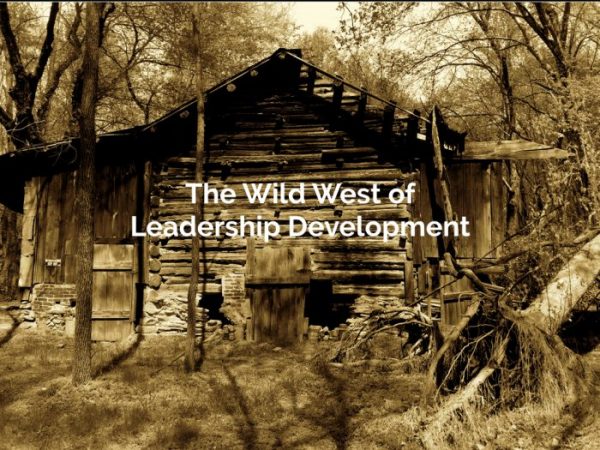Leadership development is often like the Wild West expansion in the mid 19thcentury.
When I was in my elementary and middle school years you would most likely find me building forts in the woods creating a world of my own. My brother and I and our neighborhood friends would create new paths and “discover” new streams and ponds. These were simpler days when our time was set by the arrival of lightning bugs that signaled dinner was ready.
One of my favorite forms of creative outside play was to imagine we lived in pioneer days, the days of covered wagons and panning for gold. Perhaps it was a unit we studied in school or this new computer program called “Oregon Trail” that inspired me, but I liked to imagine that quest of making our way west. At the time we lived just across the Hudson River from New York City. The idea of “westward expansion” to Oregon and California was mesmerizing.
As I got older and began to give more serious study to this time period of westward expansion in the continental United States I was faced with a different kind of story. Novels like “The Grapes of Wrath” helped me reframe some of my more romantic notions of westward expansion. The people were coming in droves, but the gold was scarce. New communities were established, but limited resources meant standards were low. The times were characterized by a lot of fighting over territories. Often towns were abandoned as people pulled up stakes and went somewhere else that held promise.
In Leading with Story: Cultivating Christ-centered Leaders in a Storycentric Generation, Rick Sessoms talks about how current leadership development efforts seem to resemble the American trailblazers of the Wild West. He says,
Modern America began with English colonial settlements in the early seventeenth century, followed by enormous energy focused on westward expansion. It was “wild” because it was a story of conquest, survival, and persistence, a culture of rugged individualism, unregulated behavior, and fierce competition as pioneers staked their claims. Hopes were high, standards were low, with boomtowns turning to ghost towns overnight. (73)
A culture of rugged individualism. Fierce competition. Pioneers staking their claims. Hope high, but standards low. Unregulated.
Today, a great number of programs called “leadership development” – much like its wild west counterparts – are expanding in places of education, business, and Christian ministry. In this chapter, Rick describes how leadership development is used to describe everything from “seminars for CEOS to boot camps for college students and mentoring programs for preschoolers.” In fact, this whole concept of leadership development is “so overused that the idea has come to mean almost anything related to improving the human condition”(73).
This is not to say that those who start these programs do not have good intentions. Any program that sets a goal of improving the quality of its leaders is commendable. However, what ends up happening is that these leadership development programs are often “unregulated, lack informed guidance, and have a short shelf life.”
But this doesn’t have to be the end of the story either.
This discipline of leadership development – specifically Christ-centered leadership development – needs credible definitions and processes in order to find a way forward and find fruition. Otherwise we might remain stuck in something that still looks very much like an unbridled wild west.
What do you think? Based on what you have seen and heard from leadership development efforts, do you see the parallels here? In what ways do you see the large field of “leadership development” as unbridled?
This blog post is the second in a five-part series that is asking the question, “What do we mean by leadership development?” You are welcome to join the discussion. You can read the first one here.

Leave a Reply